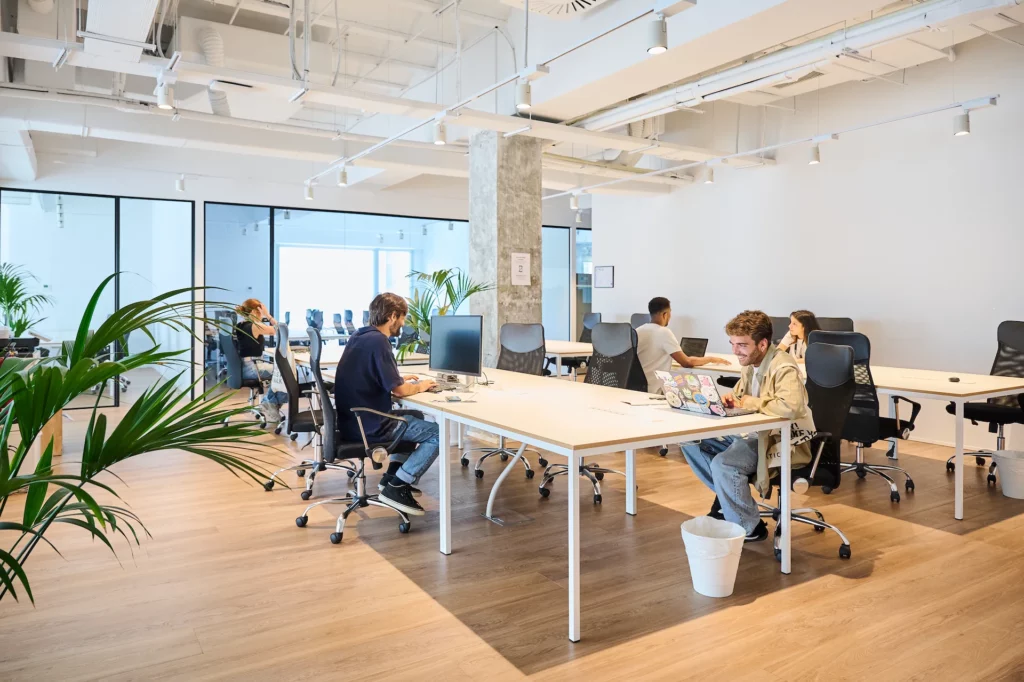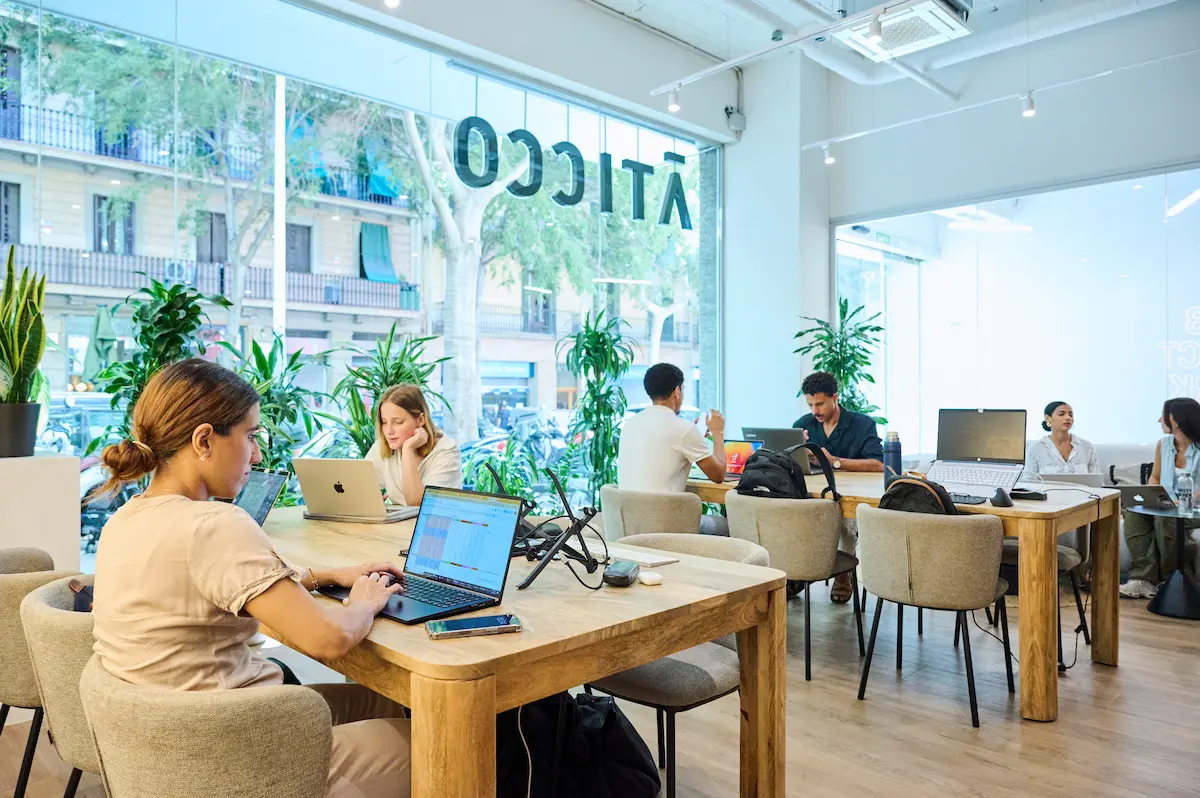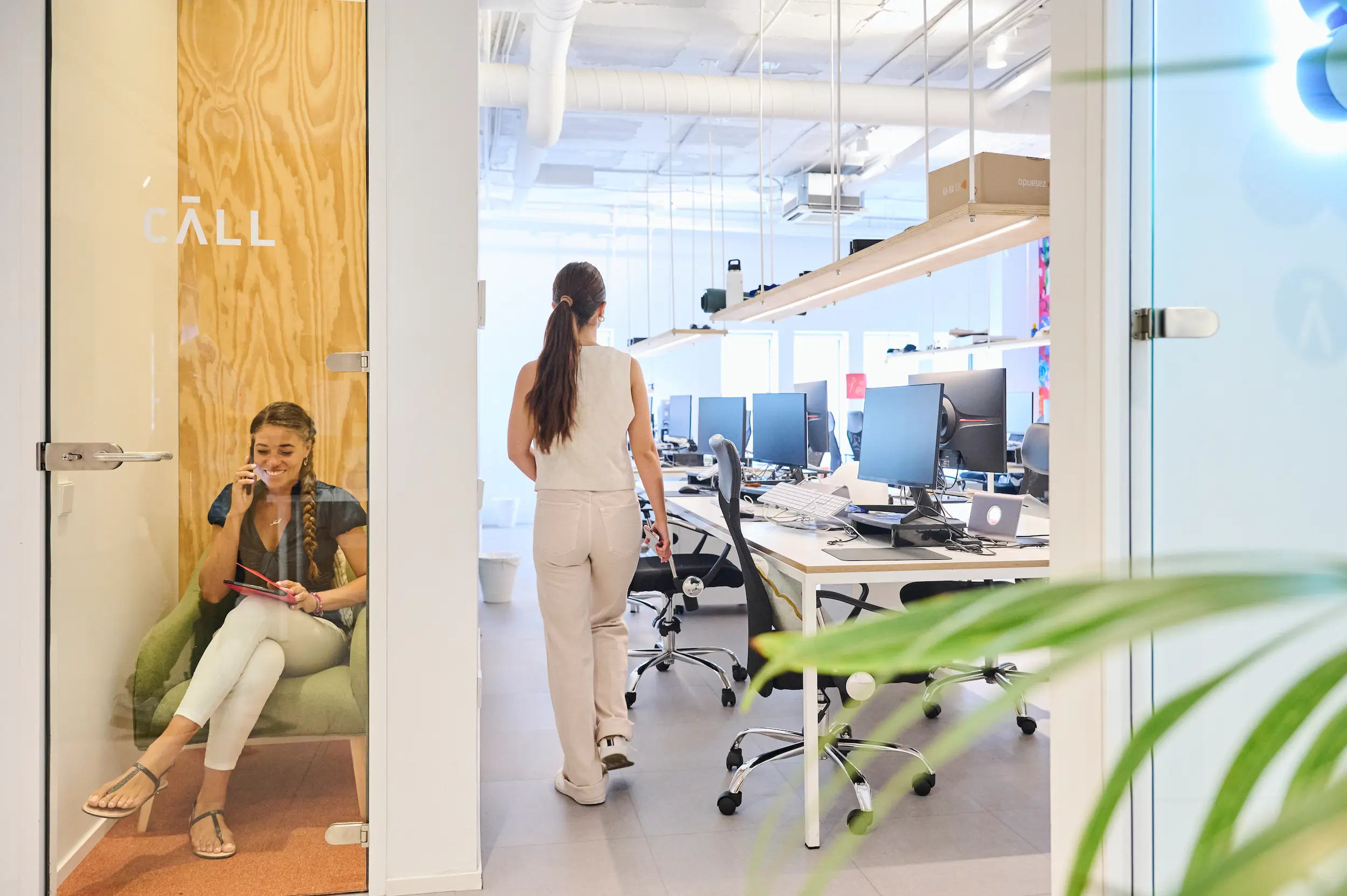Liquid Offices: The New Trend in Flexible Workspaces

The working world is constantly evolving, and with it, the workspaces. Liquid offices represent one of the most innovative and adaptable trends for companies seeking flexibility and efficiency. But what exactly are they and how can they transform the way we work?
What are Liquid Offices?
Liquid offices are workspaces designed to adapt to the changing needs of companies and their teams. Unlike traditional models, these spaces are not rigid or static; instead, they are characterized by their flexibility, modularity, and ability to evolve.
How liquid offices work in the work environment
The concept of liquid offices is based on the idea that the space should adapt to the natural flow of work. This means that employees can transform their environment according to their tasks, whether for brainstorming sessions, team meetings, or individual work. In this model, technology and furniture play a key role, allowing for quick and efficient changes.

Benefits of Liquid Offices for companies and employees
Implementing liquid offices brings advantages for both companies and their workers. Here are some of the most notable benefits:
Adaptability to organizational and team changes
Liquid offices allow companies to scale or reorganize without the need for costly renovations. This flexibility is especially useful in scenarios such as changes in team structure or the implementation of new work methodologies. For example, meeting rooms in coworking facilities such as Aticco can be adapted for activities ranging from creative workshops and strategic planning sessions to presentations, internal trainings or even networking events, fostering collaboration and flexibility.
Promotion of collaboration and creativity
Open and dynamic spaces promote spontaneous interactions between team members, facilitating the generation of ideas and creative solutions. In addition, liquid offices eliminate physical barriers that may limit communication.
Space optimization and cost reduction
Thanks to their modular and flexible design, liquid offices allow for a more efficient use of space, reducing waste and optimizing operating costs. Companies can redistribute areas according to their priorities, maximizing every square meter.

Main Elements of a Liquid Office
For a liquid office to function correctly, it is essential to incorporate certain key elements:
Modular and flexible furniture
Tables, chairs, and shelves should be easy to move and reconfigure, allowing for the creation of different environments according to need.
Multifunctional work areas
Areas designed for multiple purposes, from meetings to informal events, ensure that the space is versatile and efficient.
Open spaces and private focus areas
The balance between open spaces for collaboration and more isolated areas for tasks that require concentration is fundamental in a liquid office.

Liquid offices reflect a change in how we understand work. At Aticco, we believe that coworking spaces and shared offices are the ideal place to implement this model, offering flexible, dynamic environments adapted to the needs of new generations.
Are you interested in learning more about how workspaces can boost your productivity? Discover our options and transform the way you work!
Frequently Asked Questions about Liquid Offices
-
What are the main benefits of liquid offices?
Liquid offices offer adaptability, foster creativity, and allow for space optimization, which translates into lower operating costs and a more dynamic work environment.
-
How can companies implement liquid offices?
The key is to invest in modular furniture, technology that allows for rapid configuration, and foster a corporate culture open to flexibility.
-
What type of furniture and spaces does a liquid office require?
The furniture should be light, modular, and easy to move, while the spaces should include multifunctional zones and focus areas.



